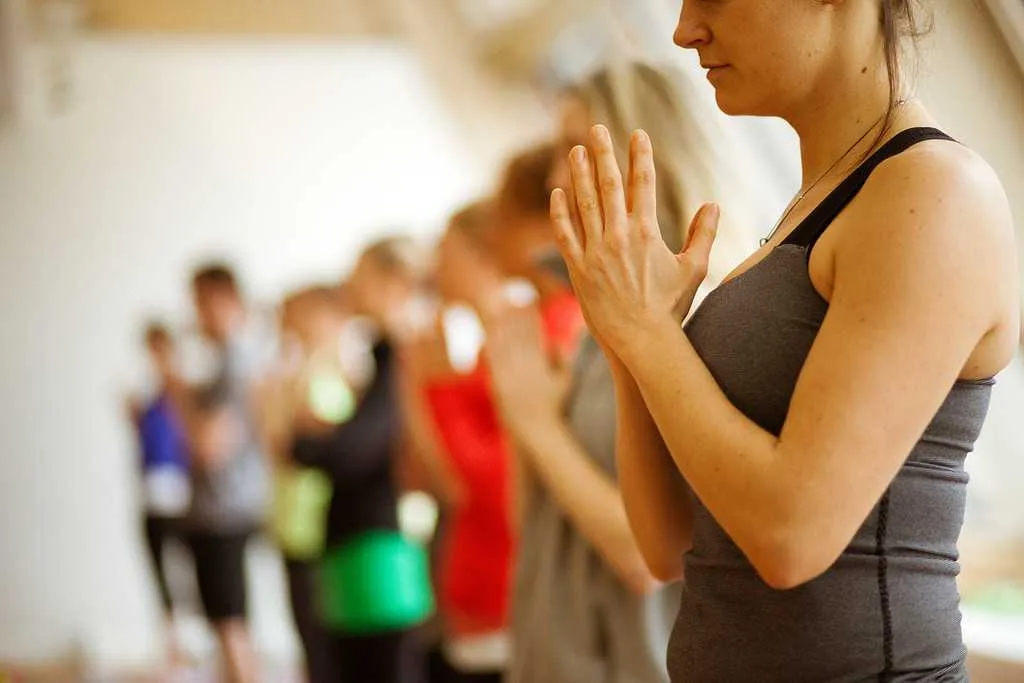Have you seen your yoga teacher ending or beginning your class with Namaste? If so, then have you ever thought about what does it meant and why you might be saying it? There are so many rituals connected to yoga which people need to practice, and what separates it from other physical activities.
The gesture Namaste is associated with a belief that there is a Divine spark present within every one of us and that is located in the heart chakra. It is said at both beginning and end of a yoga session.
The definition of Namaste
The word is broken in to three parts: first “Nama” means bow; second, “As” means; and third, “Te” means you. Therefore, the literal meaning of the word means – I bow to you. It is all about paying respect to others.
Recommended Posts for Yoga Beginners
- The Best Yoga Practices
- Best Yoga Youtube Channels
- What is Yoga Meditation
- Step By Step Guide Before Start Practising Yoga
- Best Yoga Asanas to Lose Weight
- Yoga for Reducing Weight and Increasing Stamina
- Yoga vs Gym Which One is Better
- Top 7 Easy Ways to Lose Weight
- Pros and Cons of Yoga
- Food to Eat Before and After Yoga
- Yoga during Pregnancy
- Why do we do Yoga
- Right age to start Yoga
- Best Ways to Not to Get Bored During Yoga
- Can You do Yoga During Periods
- Yoga during pregnancy
- How to prepare for yoga class
How you would make the Namaste gesture?
In order to make this gesture, you should place your hands together at the heart chakra (middle of chest), close the eyes and bow your head. You can also do it by placing your hands together in front of the third eye, bow your head and then bring the hands down to the heart chakra. This is actually a deep form of respect that people in India pay to their elders and the almighty. In other countries, the word Namaste is literally spoken while forming the gesture, but in India, forming only the gesture signifies the true respect and Namaste. Saying it verbally is not necessary while bowing.
If you try to understand it deeply, you will come across the fact that hands are brought together at the heard chakra to promote the flow of Divine love. You are allowed to do Namaste to you as a meditation technique and it will take you deeper inside your heart chakra. Even if you do it so someone else, it is beautiful, a feeling of respect and a quick meditation.
When between teachers and students, Namaste brings them come together energetically to a place free from the bonds of ego-connection. It represents timelessness. Doing so can also let a deep union of spirits blossom when people makes this gesture with deep feeling in the heart while surrendering the mind.
When to incorporate the Namaste gesture in your yoga practice?
Ideally, it should be performed at the beginning and at the end of the practice session. However, it is usually done at the end of the session because at that time mind is less active energy flowing in the room is peaceful. The teacher initiates this gesture as a way to show gratitude and respect towards students and their own teachers. And thus, allow the current students to connect with their lineage thereby maintaining the flow of energy coming from the ancestors. It truly signifies that we are all one from the heart.
It is like the divine in me honouring the divine in you
In the yoga practice, Namaste is also about honouring yourself and the world that you are living in. This also shows that yoga transcends culture and language, and connects mind and body helping you to get insight into your inner self and also into the outside world.

